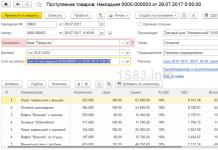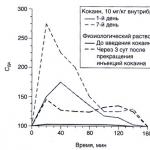The permeability of smoke channels is crucial for the normal operation of heating systems. This is especially important for solid fuel thermal units. Chimneys tend to become clogged with combustion products, which reduces the efficiency of fuel use and increases the likelihood of situations that threaten not only the integrity of the property, but also the lives of people living in the house.
How and with what to clean a chimney from soot
Heating in a private home is vital important system, on which not only comfortable living depends, but often the property and life of the residents. A special role is played here by the system for removing fuel combustion products from the room - the chimney. Its internal surface gradually becomes contaminated with condensate and soot, while the cross-section of the chimney channel decreases, draft decreases, and the complete removal of smoke from the room is disrupted.
Over time, the chimney becomes clogged with soot, and its ability to remove combustion products decreases
Why does the chimney become dirty?
Clogging of the smoke channel occurs during the combustion of fuel, when vapor and solid products are released from it and carried away by the flow furnace gases. But under certain conditions they do not fly out completely into the chimney. This happens under the following circumstances:
- Burning wet wood. Fuel with a moisture content above 24% contains an increased amount of intracellular moisture, which actively evaporates as it burns. These vapors rise along with the stove gases into the chimney. In a cold or insufficiently heated channel, they mix with cooled air, as a result of which condensation settles on its walls. And this is not just water, because the vapor contains oxidation products, so the sediment is acids. They do not just flow down the walls of the pipe, a significant part of them lingers on the walls, depositing solid combustion products from the smoke, and carbon deposits form on the walls, reducing the cross-section of the smoke channel.
When raw wood is burned, it releases excess moisture, which ultimately settles on the walls of the chimney and becomes a source of soot
- Use of prohibited fuel. Of course, there are no direct contraindications, but wood processing waste, consisting of wood with fillers in the form of binders, cannot be used to fire the stove. Such materials include waste plywood, chipboard and fiberboard. Such fuel releases a large amount of tar in the smoke, which intensively settles on the walls of the chimney. Resinous wood - pine or spruce - also has a similar effect.
- Cold chimney. Moisture condensation on the walls occurs when certain temperature in the channel. This state of gases is called the “dew point”. If such conditions are created inside the smoke channel, condensation settles on its walls in an active mode, provoking the accumulation of soot. To get rid of this phenomenon, you need to reliably insulate the pipe, reducing its heat transfer into the surrounding space. After this, the chimney will warm up, and the dew point will rise higher, leaving the space inside the pipe.
- Presence of horizontal pipe sections. The largest amount of soot is formed on the bends of the chimney, so it is better not to use this installation method unless absolutely necessary. If another solution is not possible, cleanouts must be installed on the rotary elbows, which can be opened and free the elbow from soot deposits.
If you need to make a horizontal section on the chimney, the transition to it must be done using an outlet with a special hole for cleaning (revision)
- Rough walls of the smoke channel. When constructing a chimney, it is necessary to mop the channel to improve the quality of its surface. Soot is deposited primarily on the uneven surfaces of the chimney.
- Fire the stove with household waste. Such fuel is even more destructive to the chimney than the use of plywood and other scraps. It always contains remnants of plastic or polyethylene packaging, which release a lot of chemicals when burned. In this case, the chimney is guaranteed to become overgrown with soot faster than the heating season ends.
Signs of a clogged chimney
When the outlet channel flue gases If it gets clogged, it will be immediately visible. The main signs of a clogged channel will be the following:

What to do if the chimney is clogged
Before the start of the heating season, you must inspect the inside of the chimney for blockages. IN warm time years, birds with a nest may settle in it, or debris may appear, blown into the chimney by the wind. To avoid this, the chimney must be equipped at the installation stage with a cap with a mesh that prevents such situations.
In case of such a case, there should always be a backup in the house. heating unit in the form of a heater or an electric heater built into the heating system.
Having provided yourself with warmth with its help during the cold season, you can carefully consider the situation and think through options for getting out of it.
The presence of draft in the firebox must be checked every time the stove is ignited - the flame must deviate towards the chimney
How to clean a chimney
The point of this operation is to timely clean the walls of soot deposits and debris that has gotten inside (during the off-season period). When cleaning, you need to check all sections of the chimney and the stove itself. The last step is to clean the ash pan and firebox. Timely cleaning of the chimney reduces fuel consumption and makes the operation of the stove safe.
In practice, three main cleaning methods are used, two of which are preventive:
- Chemical and biological methods. They are used as a preventive measure using compounds that soften soot and lead to its partial removal from the smoke duct.
- Mechanical. Produced by direct action on the soot layer various instruments in order to remove it.
If you use such products correctly and in a timely manner, you can avoid involving a third-party specialist in cleaning the chimney.
Biological methods for cleaning chimneys
All biological methods are based on adding some substances to a burning firebox. Among the common products you can consider the following:
- potato peelings. This is an old folk remedy for preventing the formation of soot deposits, the simplest and always available. The peels need to be prepared in advance, accumulating at least half a bucket. It needs to be dried and added to the firebox at the end of the fire. When burning, potatoes release starch, which softens the soot layer well. It happens that it simply falls down in layers or pieces, part of it is carried away along with the furnace gases. This operation is also recommended to be performed before performing mechanical cleaning;
- rock salt. The method is used when igniting the stove. The compound formed when the salt is heated softens the soot layer well. A tablespoon of salt should be poured on top of the fuel;
- aspen firewood. Firewood made from this type of wood has a high calorific value, so it is placed at the end of the firebox. Hot furnace gases simply burn soot directly on the walls of the chimney. The danger of this method is that large layers of soot during combustion at high temperatures can destroy the chimney and cause a serious fire. Therefore, this method should be used regularly, laying aspen firewood in small portions. For the same purpose, you can use birch firewood cleared of bark;
- walnut shells. The use of this product is also associated with a high combustion temperature. Therefore, they can serve as an alternative to aspen firewood. But the shells can be used in quantities of no more than two liters at a time. Otherwise, the chimney may overheat with predictable consequences.
Photo gallery: folk remedies for cleaning the chimney
Walnut shells should not be burned in large quantities - they can overheat the chimney. Burning dried peelings destroys the soot layer due to the release of starch. Rock salt, when heated, releases substances that soften carbon deposits on the walls of the chimney. Aspen firewood burns soot on the walls of the chimney due to the very high combustion temperature.
Chemicals for removing soot deposits
There are several such products, and they can be divided into two groups: household products and special chemicals. The first group includes:
- Naphthalene. This is an effective and completely reliable tool. Under its influence, the soot is stratified and carried into the firebox. It is placed in the oven on burning wood. A significant disadvantage is the pungent unpleasant odor remaining in the room. Therefore, it is not used in open hearths and fireplaces.
- Blue mixture. It's easy to make yourself if you have a few common ingredients on hand. You need to mix:
- five parts copper sulfate;
- seven parts of saltpeter;
- two parts of middle fraction coke.
Special chemicals are also used for cleaning chimneys for preventive purposes. Given the existing demand, the industry produces a variety of compounds designed specifically to combat soot. The form of release can be briquettes, similar logs, powders or solutions. Their action is based on the decomposition of smoke in the firebox into components that do not form soot.
Convenience is that the methods of their use are described in detail in the instructions for use, and they are divided into portions. You can burn these products along with the packaging, which is also very convenient. The following products are popular:

There are quite a lot of anti-carbon products on the market, so by testing you can choose the best option for yourself.
Photo gallery: chemicals for chimney cleaning
The “Jolly Chimney Sweep” tablets will help you get rid of soot in the chimney no worse than a professional chimney sweeper. The blue mixture must be prepared independently from three not very common components. This product is recommended for use only in closed cells combustion of naphthalene leaves behind an unpleasant odor that will dissipate within a few days
Video: cleaning the chimney using special chemicals
Mechanical cleaning methods
Mechanical methods are radical and are recommended for use at least twice a year. They are done from the top of the chimney using various brushes or attachments for power tools, and the final cleaning is done from below from the hearth, fireplace or stove firebox.
Chimney sweeps use special brushes on a long rope
As preparatory measures, before cleaning a thick (from two millimeters) layer of soot, potato peelings or other listed products are burned.
In this case, you may need following materials and tools:

To clean the pipe from above you need to use roof ladder well secured to the roof . In any conditions, you need a reliable safety rope.
Work at height can only be carried out in dry, windless weather. Before climbing to the roof, you should not take drugs that reduce the reaction, and especially alcoholic beverages.
Before starting work, the oven must be cooled. Clear the combustion space completely of unburned fuel residues and ash. Firebox door, vent, and lids hob close tightly and cover with a wet cloth to prevent soot from entering the room. The gate must be opened completely to avoid re-clogging the channel with fallen soot.
The chimney pipe must be freed from the head, after which:

Video: cleaning the chimney from the room side
DIY ruff
If for some reason you don’t have a brush at hand, you can make one “on the fly” from plastic bottle. To do this, you need to cut several tiers of strips up to 12–15 millimeters wide on the body so that they bend vertically. To make the device heavier, you can add sand to the bottom.
A good chimney brush can be made from a plastic bottle
Cleaning Stainless Steel Pipe
A feature of the product is high quality the inner surface of the chimney. This prevents a significant amount of soot from settling on the walls. Naturally, this is true for a properly manufactured chimney, subject to the rules for firing the stove. If persistent carbon deposits have formed, it must be cleaned urgently. To do this, use the following methods:

In order not to carry out additional “experiments”, you need to heat the stove only with suitable fuel - well-dried hardwood firewood. At the end of each firebox you need to add one aspen log for prevention.
Video: cleaning a stainless steel pipe
Cleaning soot from stainless steel sandwich pipes
Cleaning the internal sandwich pipe when used correctly will rarely be necessary. However, if such a need arises, you can use an elongated brush made of fine bristles. The flexible composite hose is rotated by an electric drill, and cleaning is done through a tee from below. The fine bristles of the brush do not damage the surface of the pipe, effectively cleaning the surface.
Such a chimney is easy to dismantle and clean each pipe individually.
Special cases of chimney cleaning
Some chimney cleaning situations require separate consideration.
How to clean a chimney pipe in a private house
The entire process of cleaning a chimney has already been briefly described above. To what has been said, you only need to add that if the smoke channel is severely clogged, the first operation is to break through the carbon deposits with a core without additional devices. Only after this are brushes of different sizes and designs used sequentially.
When carrying out work, care should be taken to create safe conditions for work.
When working at height, be sure to wear a safety rope
Video: how to clean a chimney in a private house
Cleaning a chimney in a bathhouse
The chimney in a bathhouse is usually simpler. And most often it is made from stainless pipes, which requires special attention to its cleaning. In order not to negate its main advantage - the high quality of the internal surface - cleaning should only be done with soft plastic or made from natural materials brushes. It is easiest to manage with straight pipelines, and if there are elbows - let us remind you that there should be no more than two of them - you may have to dismantle the chimney if special windows for cleaning were not provided in it during installation.
Otherwise, preventive measures and cleaning are carried out in the same way.
Cleaning the chimney pipe from resins
When considering the composition of flue gases, you need to pay attention to two main components - water vapor from fuel and vapors from creosote, which is difficult to ignite. Mixing and settling on the walls of the smoke channel, they form a resin that is difficult to remove due to its viscosity and good adhesion to various types of surfaces.
The only effective way to combat tar deposits is to prevent its formation. For this, various products are used that are produced specifically for this case.
HANSA effectively protects chimney walls from tar formation
For example, the known composition HANSA is a fine crystalline substance. Part of it turns wood into resin and water vapor, and the second, reacting with the resin substance, promotes its decomposition and combustion at the temperature in the furnace. The remaining resin on the walls turns into a brittle crystalline composition that crumbles inside the furnace.
This composition is placed inside a burning firebox. The frequency of use at the beginning of operation of the thermal unit is daily, then you can switch to using it once a week.
Cleaning a curved chimney
Bends in the smoke duct are always a necessary measure caused by the design features of the building. However, periodic cleaning is necessary. For this purpose, the pipeline design includes elements that can be used to perform this operation easily and simply. These are special hatches, when opened, it becomes possible to access the straight section of the bend. It is not recommended to make the length of inclined sections more than a meter in size. The number of bends on one pipe should not exceed two.
If there is no window for cleaning on the outlet elbow, then the chimney will have to be disassembled
How to clean the chimney of a gas water heater
The reason for cleaning the chimney of a gas water heater is its banal clogging with deterioration of draft. In a city apartment, this is all the more dangerous because the threat arises for many people at the same time. One of the signs of deteriorating traction is the “popping” of the column igniter.
Cleaning process exhaust pipe from a gas unit is practically no different from such an operation with conventional chimneys. The same brush is used. IN lately Specially designed vacuum cleaners are often used to reliably clean the pipe surface and collect contaminants. In difficult cases, when deposits cannot be removed with a brush or vacuum cleaner, special chemicals are used to soften and remove them. Considering that the use of prophylactic agents on the column pipe is impossible, you should take urgent measures if signs of clogging are detected.
It must be recognized that the success of using solid fuel furnace equipment depends to the greatest extent on the correct operation of the units and careful selection of fuel for it. In addition, it is necessary to regularly use preventive measures and know how to get rid of clogging problems. chimneys. Then stoves and fireplaces will delight you with beneficial warmth in your home for a long time. Good luck to you!
Many types of heating systems powered by combustion fuel require vigilant attention and maintenance of chimney ducts. In our review, we will look at the causes of clogged chimneys, means and methods for cleaning them, as well as rules for maintaining them in working order.
Why do chimneys get clogged?
The combustion processes of different types of fuel are very different. If the combustion of natural gas produces only carbon dioxide and water, then the products of combustion of wood, fuel oil and coal are more diverse. When burned, solid fuel emits a large amount of smoke, which contains sulfur and nitrogen compounds, and most importantly, unburned carbon residue. It is the solid soot particles that represent the bulk of the contaminants that accumulate in the chimney.
To ensure the most complete combustion of fuel, a very high temperature in the combustion chamber is required. Soot burns out at 1100 °C, but such heat is detrimental to the firebox material, and from a purely technical point of view, such conditions cannot be implemented in home heating equipment. So, the formation of by-products during combustion solid fuel inevitable, but at the same time, in some boiler rooms the chimneys remain relatively clean for several years, while in others the channels become clogged almost completely within a couple of months.

The main reason for the accumulation of carbon deposits in chimney ducts is water. During the combustion of dry fuel, the vast majority of soot is carried away by the flow of combustion products and is released into the atmosphere. If a large amount of water evaporates during combustion, as happens when burning raw wood, soot particles bind, become heavier and more viscous, which is why they stick to the walls of the chimney. In addition, the presence of moisture on the walls of the channel can also contribute to the deposition of carbon deposits. If hot gases pass through cold pipe, then the small amount of moisture that inevitably forms during combustion condenses on the surface of the pipe. Soot sticks much more intensely on wet surfaces, which is why chimneys need insulation.
Chimney inspection
The condition of chimney ducts must be checked at least once a year - at the beginning of each heating season. Typically, only the longest acceleration section needs to be inspected, which requires access to the top of the pipe. If there is a deflector or protective cap they must be removed and visually assessed the clearance in the pipe by shining a flashlight inside. There are several types of pollution:
- Porous, dry soot build-up indicates that the chimney is operating normally, but has not been cleaned for a long time. With further operation, the clearance will gradually decrease, which will lead to deterioration in traction.

- Viscous tarry formations on the walls indicate that wet fuel is constantly burned in the boiler, or the chimney needs insulation. Such contaminants grow much faster than dry soot, and the resin gradually drains, which is why there is less clearance in the lower part of the pipe, which is very difficult to notice during external inspection.

- The chimney may become clogged with debris, such as fallen leaves or small animal nests. Operation of the chimney in this case is impossible; the blockage must be removed immediately.
Soot and soot removal products
Before you start cleaning the chimney, it would be a good idea to try using special chemicals. They are sold under different trademarks: Kominicek, Chimney Sweeper, Spalsadz, Sadpal, but all have approximately the same composition and operating principle. Chimney cleaners are a set of inorganic salts that, when heated, form volatile active substances that react with carbon compounds. In essence, the process of chemical decomposition of soot is similar to the action of catalytic purification of car exhaust gases. After decomposition, the soot falls off the walls of the chimney and is carried out by a stream of hot gases. The effect of cleaning chemicals is especially useful for removing carbon deposits from the heat exchanger and those parts of the smoke removal system that are difficult to access.

The use of chemicals for cleaning chimneys is primarily preventive in nature, but they can also be used immediately before mechanical cleaning. After decomposition, carbon deposits become loose and easier to remove; moreover, when contaminants fall off, the risk of the pipe becoming clogged is reduced. Before cleaning, you need to use chemicals at 2-3 times higher concentration than specified in the instructions. In this case, it is advisable to maintain the active combustion of the boiler or stove for several hours, using only dry firewood or coal.

Mechanical cleaning of channels
Manual removal of soot is required in cases where the thickness of the build-up on the walls exceeds 5-7 mm. However, if the chimney has not been serviced for a long time, carbon deposits can occupy more than half the cross-section of the pipe, so several methods are provided for cleaning.
To remove thin deposits, a round steel brush is used, suspended on a cable along with a spherical weight, the shape of which will not allow it to get stuck in the pipe. The diameter of the bristles at the widest part should be 10-20 mm larger than the cross-section of the chimney. For channels with a special internal coating, nylon brushes should be used; their diameter should be 50-70 mm larger than the pipe. The cleaning principle is simple: the brush is pulled up and down inside the pipe until all carbon deposits are removed from the walls. Periodically, the brush must be removed to clean the bristles from adhering soot and visually determine the location of the most problematic areas of the chimney.

During the cleaning process, soot falls down, so all inspection hatches and the valve on the boiler must be closed. If the fireplace chimney is being cleaned, its firebox must be closed thick film, which is hermetically glued with tape to the outer walls of the arch. After completing the cleaning, you need to wait a while for the soot to settle, and then carefully remove the bulk of it with a dustpan, and the remainder with a damp cloth or a washing vacuum cleaner.


In some cases it is not possible to access the top of the pipe. In such situations, the boiler should be dismantled and cleaned from below. For these purposes, disc brushes are provided, mounted on a long flexible rod. You can also make such a device yourself using brass grinder brushes and a metal-plastic pipe.

Removal of heavy contaminants from the chimney should be done using a straight or semicircular blade (depending on the shape of the chimney channel). It is important to start cleaning strictly on one side so that crumbling carbon deposits do not clog the pipe. If the channel is completely clogged, the blockage is broken through with a massive metal rod tied to a cable. After removing the bulk of the contaminants, the chimney must be thoroughly cleaned with a brush.

Precautions and pollution prevention
Chimney cleaning is a work increased danger. The main threat is posed by soot, the suspension of which in the air is explosive; moreover, it is a carcinogen and does not linger in the upper respiratory tract. Particular care should be taken when working on the roof: securely secure the ladder and use a safety rope tied to the chimney pipe.

When cleaning yourself, there is always a risk of dropping a tool inside the canal, so all devices must be tied with a cord. For the same reasons, you should not use homemade devices and weights of irregular shape.

To avoid intense clogging of the chimney, you should use high-quality fuel: one-year-old hardwood firewood, or better yet, briquettes or pellets. It is periodically necessary to use chimney cleaning products and always remember: regular cleaning always costs less effort than building a new chimney or dismantling an old one to remove a blockage that cannot be broken through.
Video on the topic
Everyone knows that the removal of fuel combustion products in stoves and fireplaces is carried out through the chimney. It is also designed to create natural draft in the system, ensuring the efficiency of the combustion process. Those who have a stove are well aware that when the permeability of the chimney decreases, serious problems arise in its operation, including backdraft.
In this case, instead of being discharged outside, smoke and soot enter the living space. In such a situation, urgent chimney cleaning is required, otherwise carbon monoxide poisoning is possible. Regular maintenance of your smoke extraction system will help prevent such situations from occurring. You can clean the chimney from soot in different ways, which we will get acquainted with.
Cleaning a pipe can be done neatly and even elegantlyWhy does the chimney become overgrown with soot?
Combustion of fuel is a process of high-temperature oxidation in the presence of oxygen. If the temperature is not high enough or there is not enough oxygen to support an efficient combustion process, soot is formed as a product of insufficient oxidation of carbon. Visually, it is detected in combustion products when black smoke exits the chimney. The main causes of soot are:
- Using raw wood as fuel. The combustion temperature in the firebox is reduced due to the consumption of thermal energy for drying firewood, as a result of which soot is actively formed.
- Plywood, particle boards and other similar materials contain glue. When it burns, the chimney becomes clogged very quickly, as when burning plastic bags and plastic.
- A large amount of soot is formed when the natural draft of the chimney decreases. This can occur due to the valve being covered or the pipe itself being insufficiently high, as well as due to a decrease in its permeability.
 This is what soot looks like on the inner surfaces of the pipe
This is what soot looks like on the inner surfaces of the pipe The type of wood used as fuel also affects the rate at which the chimney becomes overgrown with soot. This process will occur most quickly when wood is burned coniferous species trees, slower - deciduous trees, but they cost much more. Regardless of the type, you must ensure that only dry firewood goes into the firebox.
However, even if you select the fuel correctly, you will still have to occasionally clean the soot in the stove with your own hands.
Why do you need to clean your chimney?
Lifted by the updraft warm air soot is deposited on the inner walls of the pipe. A layer of soot that thickens over time leads to quite serious operational problems. heating system. These include:
- reduction in natural draft due to narrowing of the smoke exhaust channel;
- accelerated wear of the internal surfaces of the pipe walls;
- reduction in the efficiency of the furnace;
- increased risk of fire inside smoke exhaust ducts.
 Such a “fireworks” of burning soot can lead to a fire
Such a “fireworks” of burning soot can lead to a fire To prevent such unpleasant consequences from occurring, the pipe must be periodically cleaned. This procedure should be carried out at least once a year. This procedure is not pleasant, but cleaning the chimney pipe and removing soot from it is simply necessary.
Methods for cleaning chimneys and stoves from soot
To learn how to clean the stove correctly and remove soot from it, it makes sense to study all known methods of doing this work. Since ancient times, the services of chimney sweeps have been needed by a large number of people; professionals in their field have been respected in society. From then to the present, many methods have been invented to clean soot from chimneys. These primarily include time-tested mechanical methods using special tools, used by professional chimney sweeps for decades.
Burning out soot using a thermal method gives good results, but when using it there is a danger of cracking the pipe. You can clean the chimney without using special tools, using chemicals of folk invention or industrial development.
 The work of a chimney sweep is not without romance
The work of a chimney sweep is not without romance Getting rid of soot with your own hands
The mechanical cleaning method is used in case of severe contamination of the chimney, when the soot layer exceeds two millimeters in thickness. In order to get rid of soot with your own hands, you will need the following tools:
- A brush made of plastic or metal for cleaning the chimney. Its diameter should exceed the internal cross-section of the pipe by one and a half times.
- Equipped comfortable handle flexible plumbing cable. It can be replaced with a strong rope.
- A long-handled brush with stiff bristles. It should be possible to increase the length of the handle if necessary.
- A metal core or weight attached to the brush. These parts must be centered and have a diameter two times smaller than the internal cross-section of the chimney.
The work of cleaning the chimney can be done both from above and from the bottom of the fireplace or open firebox. When performing all manipulations on the roof (to prevent falls), you must use a safety rope and a strong ladder. The respiratory organs are protected by a respirator, gloves are put on the hands, and shoes with non-slip soles are put on the feet. When working at height, it is prohibited to consume alcoholic beverages and medicines, reducing reaction speed and concentration.
 Basic tools for cleaning pipes
Basic tools for cleaning pipes Before performing all procedures, it is necessary to allow time for the chimney to cool completely. The doors of the heating device in the living room are tightly closed to prevent soot from entering the house. Work begins by lowering a metal weight attached to the chimney into the chimney. flexible cable. This allows you to determine the distance to the blockage in order to eliminate it.
In this case, you need to try to keep the load along the central axis of the pipe section so as not to damage its walls.
A thick layer of carbon deposits from the inner surface of the chimney is pre-cleaned with a scraper on a long handle. Final cleaning is done with a brush with a metal core attached to it. If the stove design has an open combustion chamber, cleaning the chimney is completed from below using a brush with stiff bristles or a brush on an extendable telescopic handle. Lastly, the firebox is cleaned of soot using a vacuum cleaner.
Chemical cleaners are a good helper
Chemical cleaners are good helpers in removing soot from a chimney. They cope well with even the most difficult stains. Specially selected reagents effectively remove thick layers. When a composition consisting of a mixture of equal parts of coke, saltpeter and copper sulfate is burned on smoldering coals, soot deposits fall off.
 Chemicals are easy to use
Chemicals are easy to use The industry produces a so-called anti-carbon chemical composition that has a very strong effect. Under no circumstances should the dosage of the drug indicated on its packaging be violated, otherwise cracking of the chimney may occur. Before use, be sure to read the instructions for use and follow all recommendations indicated there.
A composition called Kominichek is produced in the Czech Republic, active substance which is copper chloride, therefore, when using it, it is necessary to ensure good ventilation in the living room, or even better, leave it. The frequency of treatment is about three months with active use of the stove or fireplace.
Domestic manufacturers produce natural aspen or birch logs impregnated with copper chloride. It has a simple name: a log is a chimney sweep; when it is burned in the furnace firebox, substances are released that destroy tar deposits on the internal surfaces exhaust system. Considering the relatively high cost of chemical cleaners, it is cheaper and easier to follow preventive measures that reduce the formation of deposits and regularly carry out mechanical cleaning.
Folk cleaning remedies are no worse than chemicals
Folk cleaning products work no worse than proprietary chemicals. The simplest and in an accessible way is cleaning dirt in the chimney using potato peelings. To do this, burn about half a bucket of dried potato peelings in the furnace firebox. The starch they contain softens tar deposits, and they are easily removed mechanically. When burning, firewood sprinkled with rock salt releases sodium chloride vapors, which destroy soot deposits on the walls of the chimney.
 Samples of folk remedies for cleaning pipes
Samples of folk remedies for cleaning pipes Burning aspen wood at the final stage of heating the stove is highly efficient. They have a high combustion temperature, and the intense heat burns the exfoliated deposits, but you need to make sure that sparks do not fly out of the pipe. Birch logs peeled from bark have approximately the same effect when loaded into the combustion chamber.
An alternative to aspen firewood is walnut shells. They also have a very high combustion temperature, so no more than two liters of this material should be loaded into the firebox at a time. Walnut shells perfectly clean the chimney of tar deposits. A good preventive measure is ordinary naphthalene. A tablet thrown into a fire helps the soot peel off and escape along with the smoke, but the smell of mothballs is extremely persistent and it is very difficult to get rid of it later.
When mixing seven parts of saltpeter, five parts of copper sulfate and two parts of coal, the so-called blue mixture is obtained. Approximately twenty grams of this mixture are poured into a well-heated stove and the door of the combustion chamber is closed. This composition is not recommended for use in open-fired ovens.
 As you can see, cleaning the pipe yourself is not at all shameful.
As you can see, cleaning the pipe yourself is not at all shameful. Some owners, without further ado, clean the chimney using ordinary watering hose, preferably hard. It is pushed as far as possible into the chimney and several reciprocating movements are made. As a result, most of the pollution falls down: into a substitute bucket or other similar container.
Unusual, but effective method is burning aluminum cans. They should be placed in a well-heated furnace with a large number hard coals. One can should burn in about five minutes, and not just sit there changing color scheme. Fumes from burning aluminum produce a good cleaning effect.
Extreme method using a chainsaw
Using a chainsaw is an extreme method of cleaning a chimney. A nozzle is put on the unit, which works on the principle of removing sawdust from woodworking machines in the form of a snail. It turns out to be a kind of exhaust cannon driven by a chainsaw motor. The flow of drawn soot is oriented in the direction of the wind. A similar effect can be achieved using a vacuum cleaner with reverse exhaust, but for its operation you need to run an electrical power cable to the roof.
Dear reader! Your remark, suggestion or review will serve as a reward to the author of the material. Thank you for your attention!
The following video has been carefully selected and will certainly help you understand what is presented.
Previously, when stove heating It happened in all houses, there were no problems with cleaning the chimney. The head of the family knew exactly how, with what and when to clean it, and the profession of a chimney sweep was held in high esteem.
Over time, boilers replaced stoves, and today only a few can guess why the fire stops lighting and smoke does not come out when kindling. But the most big problem not even this - but the fact that carbon monoxide, without passing through the contaminated pipe, begins to concentrate in the room, which creates a direct threat to the life and health of household members. In order for you to avoid such problems, we will tell you how to clean a chimney from soot at home and why it gets dirty in the first place.
Why does the chimney get clogged?
First, you need to understand that over long periods of use, any chimney, even one made using technology and the right materials, becomes clogged. In any case, it is necessary to clean the chimney at least once every 1-3 years, depending on the intensity of use.
Much more often, soot accumulates in the depths of the chimney due to a violation of the design or manufacturing technology. For example, the following main reasons can be identified:
- improper pipe laying and masonry mortar residues on inside;
- violation of the operation of the stove or fireplace;
- the chimney is made of low-quality material;
- lack of a protective umbrella on the chimney, due to which birds fly into it, debris, leaves, etc. get in;
- violation of the size of the chimney pipe lumen.
Improper operation of a stove or fireplace means using firewood with a high concentration of resin as fuel or burning “chemical” waste - polyethylene, plastic, rubber.
- Often the cause of rapid clogging of the chimney pipe is poor-quality material that was used in masonry - both brick and masonry mortar. This leads to chips, falling parts that get stuck in the chimney, etc.
- A narrowing of the lumen of the chimney pipe, caused either by one of the reasons or by several in combination, disrupts the draft during ignition, prevents smoke from escaping, and increases the time it takes for the chimney walls to warm up.
If you notice these signs, it's time to clean your chimney. In addition to the fact that, as mentioned earlier, carbon monoxide accumulates in the room, when soot deposits increase, at some point they ignite and a fire starts.
How to remove soot
Of course, there are specialized specialists on the labor market who clean pipes using various chemical and mechanical methods, but the price of their services is quite high. On average, the tariff depends on the type of heating device (stove, sauna stove, fireplace or barbecue) and ranges from 9 to 12 thousand rubles for a one-time service. It is clear that it is much cheaper to figure out on your own how to clean a chimney from soot at home, and not deal a crushing blow to the family budget.
The simplest household methods for cleaning a chimney
Potato peelings
Oddly enough, this is an excellent tool in the fight against small (!!!) soot deposits.
Potatoes themselves do not remove soot from the pipe, but soften it, which makes it possible to quickly and easily remove it mechanically.
For this method, prepare 0.5 buckets of dry potato peelings or finely chopped potatoes, also pre-dried, in advance. When the wood burns out and the coals remain smoldering, throw potato peelings on them. When burned, they release starch vapors, which softens the soot to an acceptable state.
Table salt
This is rather a preventive method that is recommended to be used every time you light a fireplace or stove. Salt is poured onto burning wood and the released chemical elements prevent soot from settling on the walls of the chimney. Of course, over time it still settles, but not in such quantities and not so viscous.
Chimney Sweep Logs
You can purchase a special log at a store for stove makers or use birch firewood. If possible, you can also buy aspen logs; they have the same effect.
It is imperative to remove the bark from birch logs.
This firewood increases the temperature in the firebox to maximum in a short time, after which the soot simply breaks into shreds. This good way, but requires constant human presence. If enough soot has accumulated, such a powerful fire from an aspen or birch tree is quite capable of setting it on fire. Don't be lazy and stay near the fireplace all the time until the wood burns out.
Chemical methods for cleaning soot
It's much more effective ways combat even significant soot deposits.
The following proven effective drugs exist:
- A mixture of saltpeter, copper sulfate and coke in equal parts. The composition is poured onto smoldering coals; during combustion, a number of chemical elements are released, causing the shedding of a significant amount of soot.
The maximum dosage is 200 grams of the finished composition.
- PHC (anti-carbon chemical composition) is a very effective composition for combating soot, which must be burned directly in the package.
Be sure to read the instructions - the effect of the drug is so strong that it can even cause cracking of the chimney pipe. It is strictly forbidden to violate the dosage.
- Kominichek is a Czech drug for combating a small layer of soot deposits (2-3 mm). One package is enough to clean a standard chimney for 2-3 months. For regular use of a stove or fireplace, it is recommended to use the composition at least 3 times a year.
The active substance is copper chloride CuCl2, so during use it is necessary to create a very good draft in the room and, if possible, not be present in it.
- Chimney sweep log is a natural birch or aspen log, additionally impregnated with CuCl2. When burned, it releases a number of chemical elements that provoke the peeling of creosote deposits - tar deposits.

Considering that these drugs are also not cheap, you should use them no more than once a year or two. It is much easier and cheaper to take a number of preventive measures and clean the pipe mechanically.
Methods for mechanical chimney cleaning
You purchase the tools necessary for such work only once, so this method will not be expensive in the future.
So, you will need:
- special brushes of different sizes
.jpg)
- kettlebell on a strong rope

- hard brushes

- hook (with rigid hook)

In addition to the basic tools, you will need a respirator, thick cloth gloves and safety glasses.
All stoves are cleaned from above, and fireplaces - from below.
Cleaning the stove, including the bathhouse, is carried out in the same way as you used to wash milk containers with a brush. Using gentle circular movements, scrape off the soot that falls to the bottom of the well. Select the tool depending on the thickness of the canal. Initially, you can burn the wood with seasoned salt or potato peelings to soften the soot and make work easier. Then use brushes or brushes and, if necessary, a cleaning rod or hook.
To carry out cleaning activities, choose a sunny, windless day. Be sure to securely secure yourself near the pipe to eliminate the risk of injury.
The fireplace is cleaned mainly with hard brushes with long handles from below.
Be sure to clean the bottom of the well after the pipe is cleaned - scoop out all the soot that has fallen off the walls with a poker and scoop and throw it away.
Cleaning a chimney from soot and deposits on your own is not as difficult as it might seem at first. Yes, this is a long process, especially if you have not encountered this before. The most important thing is to take a number of preventive measures in time, and alternately use the previously mentioned methods. Optimal time for cleaning - early autumn, when there are still nice days.
Fireplaces and wood stoves are rarely used for heating in modern homes due to the fact that high-tech methods of maintaining heat are much faster, more convenient and do not require as much physical effort. But, despite this, fireplaces do not lose their popularity, creating a unique spiritual atmosphere in country houses or city apartments.
One of the important procedures that ensures safe use wood stove or fireplace - regular cleaning of the chimney. This must be done regardless of the design of the chimney, through the wall or with an exit through the roof. Why should the chimney be cleaned and how often should it be done? How effectively can this procedure be carried out using the Chimney Sweeper log chimney cleaner?
Why do you need to clean your chimney?
To understand why it is necessary to clean the chimneys of stoves and fireplaces from soot, first of all, you need to know what happens in the chimney when using any type of solid fuel material, including firewood. When a fire burns in a fireplace or stove, so-called combustion products, soot and soot, are actively released. All this, along with the smoke, goes up, right into fireplace chimneys and settles in a soft, greasy layer on the walls of the pipe. The more time has passed since the last cleaning, the less space there is left for exhausting smoke and
Of course, proper operation, as well as adherence to simple principles for selecting firewood for a stove or fireplace, can significantly slow down this process:
- There is no need to burn anything in the stove (fireplace) except wood. It is better to try to dispose of any household waste, even paper waste, in other ways.
- Choose firewood exclusively from wood species that contain a minimum of resins. This is, for example, dry wood of alder, aspen, oak, and birch. A little worse in its own way quality characteristics firewood from fruit trees, which is so loved for the amazing aroma released during combustion. Experts consider coniferous trees, which emit large amounts of soot, to be outsiders in this list due to high content natural resins. It is also not recommended to often use poplar and willow, which are not the most expensive but quickly burn out.
- Don't forget about regular cleaning of the blower.
Compliance with all of the above, together with prevention, will allow you to avoid serious chimney blockage for years. But, despite this, cleaning the stove (fireplace) pipe still cannot be avoided. In addition to settling soot, a blockage can form from the outside if debris or a foreign object gets into the pipe. Therefore, professionals involved in chimney repair and cleaning often recommend checking the chimney pipe in the fall and spring.
How do you know when your chimney needs cleaning? The first sign that the procedure cannot be postponed will be a visible deterioration in cravings. The release of the main amount of smoke and smell not through the chimney, but into the room, sparks flying from the fireplace is a signal that the chimney is dirty. Draft, slow and insufficient, not only creates smoke, but can also lead to intoxication with components carbon monoxide. In addition, a spark flying from the fireplace can cause a fire or injury.
Why else is a contaminated chimney pipe so dangerous? The combustion of accumulated soot can easily lead to cracking and destruction of the chimney walls. The conclusion that can be reached based on all of the above: cleaning the chimney is an important procedure, the thoroughness and regularity of which determines the good operation of stoves and fireplaces, as well as the safety of the home.

Cleaning methods
Depending on the means used to clean the chimneys of stoves and fireplaces from soot, all methods for removing dirty sediment from a chimney pipe can be divided into three groups:
- The oldest of known methods- this is a mechanical, or traditional, chimney cleaning. The procedure is carried out using special “chimney sweep tools”: various brushes and a “core”, a cable with a heavy load to break through the blockage. Despite the outward primitiveness, such cleaning of soot from chimneys of stoves and fireplaces gives best effect and allows you to cope with the most advanced types of chimney pipe blockage.
- Thermal cleaning is also a fairly old method that has been proven over the years. It consists of “burning out” the soot by heating with well-dried pine wood. Technically, lighting a fire and waiting for the result is the simplest and least expensive way. But it is also the most dangerous: with a large accumulation of soot, a fire in the chimney is practically a small explosion. Pipe, especially from brickwork, which has small cracks, may simply fall apart. Therefore, experts advise using this method only as a preventative measure, provided that a large amount of soot and soot has not had time to settle in the chimney pipe.
- Chemical (non-mechanical) cleaning. When considering the use of such a product as a “Chimney Sweep” log for cleaning a stove (fireplace) chimney, reviews of which are found on most construction forums, it is worth taking a closer look chemical methods. Apply chemical properties substances for dissolving or drying soot in the chimney began many decades ago, with the so-called folk remedies. For example, the most famous life hack, invented by our great-grandfathers, is burning potato peelings. Also, the chimney was often cleaned by pouring it onto hot firewood. regular salt. Today, along with folk remedies, a huge number of modern products from chemical laboratories have appeared in stores, designed for cleaning chimney chimneys in a non-mechanical way. Such products are produced in the form of pressed bars (or logs), as well as in the form of dry powdery masses. Distinguishes from traditional methods modern “chemistry” requires strictly following the instructions and observing the dosage, as well as a smaller amount of substance used at a time.
Chemical cleaning products include the Chimney Sweep log, which is often recommended on construction sites on the Internet. What is this product and how should it be used to effectively get rid of soot deposits in the chimney?

Log "Chimney Sweep": what is it
What is a patented non-mechanical chimney cleaning product? Its brand name is “Log Chimney Sweeper” (reviews of this product are given below). Externally, it is a pressed block, measuring 25x8x6 cm, wrapped in a protective paper wrapper. Sold in original packaging containing product information and procedure instructions.
The product is recommended for cleaning stove and fireplace pipes of any type, even complex design, for example, a curved chimney through a wall. Substances that make up logs emit volatiles when burned chemicals, which enter the chimney along with smoke and hot air and act on the layer of soot accumulated there. As a result of this, the contaminants in the pipe dry out and fall off the walls of the chimney.
The Chimney Sweeper log is intended for fireplaces or stoves using coal or wood raw materials. It is strictly forbidden to use this product in ovens equipped with special devices, as well as those operating on gas or electricity.
Important! The question often arises as to whether a product such as a Chimney Sweeper log can completely replace mechanical cleaning. Reviews from professionals about this product warn: such cleaning can only be preventive. Using logs for a long time eliminates the need to contact a specialist who cleans the chimney. However, it is not possible to completely abandon mechanical cleaning.

Composition of the “Chimney Sweeper” product
The Chimney Sweeper log is declared by the manufacturers as a product that is safe for humans and pets. In the composition of artificial logs:
- Coal wax (small content of coal dust).
- Natural wood sawdust.
- Natural substances: urea and amorphous silica.
- Ammonium sulfate is a substance that is essentially a compound of sulfuric acid and is actively used for industrial needs. Including for the purpose of disinfecting water in city water supply systems.
- Sodium sulfate (anhydrous), another commonly used sulfuric acid compound (sodium salt). In addition to industrial purposes, this substance is officially a food additive, and was previously used in pharmacology.
- Substances in the composition that may cause concern - and in concentrated form - are both contraindicated for contact with the mucous membranes of the eyes and human skin. Therefore, there is no need to remove the log from its protective paper casing. Better yet, protect yourself with regular rubber gloves.

Preparation for the procedure
To ensure safety, before cleaning the chimney using Chimney Sweeper logs, you should carry out preparatory steps.
First of all, you need to inspect the chimney to check if the pipe is clogged with foreign debris. If a blockage is detected in the chimney, the use of logs should be abandoned in favor of a mechanical cleaning method.
Is it necessary to put firewood together with Chimney Sweeper logs?
The use of the “Chimney Sweeper” product is completely acceptable without “support” in the form of coals or wood firewood. However, hot coals left over from the previous fireplace firebox (stove) or dry firewood placed before cleaning the chimney using a Chimney Sweeper log will significantly enhance the effect of the application. this tool. When cleaning the chimney with a “Chimney Sweeper” log in combination with firewood (coals), a block of the product is laid out on top.
Forbidden! Burn more than one log in combination with hot coals.
Instructions for use
How to use the Chimney Sweeper log correctly and safely? The instructions are located on the branded packaging of the product:
- Remove the log from the original packaging without unwrapping the protective wrapper and place it in the firebox. Burn the paper wrapper on both sides.
- In a closed oven, you should close the door flaps; in a fireplace, use a protective grill.
- Wait until complete combustion bar (about 90 minutes).
- The remains (ash) of the bar should be left in the fireplace for the entire period of use, about 1-2 weeks. During this time, you can use the stove (fireplace) as usual.
- After the procedure, it is recommended to ventilate the room.

Last stage of cleaning
You will need to thoroughly clean the stove (fireplace) two weeks after using the Chimney Sweeper log product. During this time, all active substances will have time to have the maximum possible effect on deposits in the chimney. The soot, softened under their action, falls down.
At this stage, it is important to remove the fallen soot from the chimney pipe elbow, the smoke damper firebox and other accessible elements of the fireplace (stove); the chimney will need to be inspected again. Cleaning is especially necessary for fireplaces with curved chimney channels, otherwise remaining soot may clog the chimney.
To remove cleaning waste, tools that are accessible to everyone are well suited: a vacuum cleaner and a regular fireplace brush.
How much product is needed for one cleaning?
Another question that may arise for a person using the Chimney Sweeper for the first time: how many logs should be burned at a time for more effective cleaning? Manufacturers recommend burning one log for regular cleaning, and two logs for wide chimneys, but one after another, not simultaneously. Laying two logs in one burn is allowed for the first cleaning or removal of a large layer of settled contaminants. But this should be done carefully, observing all fire safety measures.
How often should cleaning be done using Chimney Sweeper logs?
The manufacturer of the Chimney Sweeper recommends that you carry out the cleaning procedure regularly, at least twice a year. The frequency of cleaning largely depends on how often the stove or fireplace is used. For example, if the fireplace is lit once daily, it is enough to carry out preventive cleaning twice a season, using one block each time. If the fireplace (stove) is lit no more than once a week, one log for the heating season is quite enough.

















